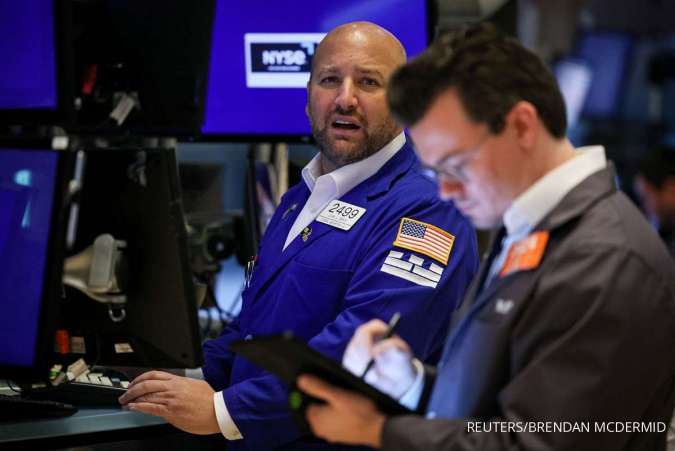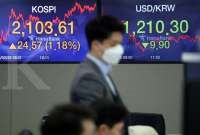US TREASURY - WASHINGTON, March 11 (Reuters) - U.S. Treasury yields rebounded on Monday from last week's decline, as investors consolidated positions ahead of a slew of economic data including the latest inflation and jobs figures.
The benchmark U.S. 10-year Treasury yield US10YT=RR on Monday was little changed to slightly higher at 4.096%, after declining for four straight days. U.S. 30-year yields US30YT=RR remained relatively flat at 4.261%.
On the shorter end of the curve, the two-year Treasury yield US2YT=RRrose 4.8 basis points to 4.535% after also falling for four days in a row.
A slew of new corporate debt and Treasury bond issuance entered the market on Monday.
"Usually Monday is a very heavy new issue supply day," said Tom di Galoma, co-head of global rates strategy at investment firm BTIG. "And so I think rates have risen both in Europe and in the U.S. due in part to that."
Read Also: Yen Rises as Investors Eye Japan Policy Move; Bitcoin Soars to New Record
Wall Street dealers typically look to lock in borrowing costs for corporate bonds they are underwriting. As part of that process, dealers sell Treasuries as a hedge to lock in the borrowing cost before a bond sale. Once the bond is sold, the dealer buys Treasuries to exit the "rate lock."
A closely watched part of the U.S. Treasury yield curve measuring the gap between two- and 10-year Treasury US2US10=RR yields, seen as an indicator of economic expectations, deepened its inversion to minus 44.2 bps, from minus 40.3 bps at Friday's close.
An inverted yield curve historically is seen as a precursor of recession.
Investors are also looking ahead to several key economic datapoints this week which will further inform the Federal Reserve's interest rate policy stance.
The market is pricing in a 97% chance of no rate cuts by the Fed following next week's March FOMC meeting, CME's FedWatch data showed. The reverse is the case for June's meeting, with the market pricing in 70.2% odds of easing.
Read Also: Recommendations for PGAS Shares with Limited Projected Performance Growth
Perhaps most significant is Tuesday release of February's consumer price index, which is expected to come in slightly higher than January's prices on a headline basis but lower based on core prices.
February's CPI "should alleviate concerns that inflation is reaccelerating after the January data," BofA Global Research said in a report on Monday.
"Overall, a report in line with our expectations would keep the Fed on track to begin cutting rates at its June meeting," BofA later added.
February's producer price index will follow on Wednesday, in addition to initial jobless claims for the week ended March 8. Both readings are expected to align with the previous figures.
No Fed members are scheduled to speak this week, due to a blackout period ahead of next week's March meeting.
On Monday, the U.S. Treasury held an auction for $56 billion in three-year notes US3YT=RR. It was well-received, with a high yield of 4.256%, below expectations at the bid deadline. This suggested that investors did not demand a premium to take down the note.
Read Also: Argentina Launches $65 Billion Bond Swap to Push Back 2024 Debt
The bid-to-cover ratio, a gauge of demand, was 2.60, slightly above the February level of 2.58, but still a little lower than the 2.70 average.
The Treasury is also set to sell $39 billion in 10-year notes on Tuesday, followed by $22 billion in 30-year notes on Wednesday.
By Matt Tracy
(Reporting by Matt Tracy; Editing by Ros Russell, Gertrude Chavez-Dreyfuss and Richard Chang)
/2024/02/06/722128306p.jpg)














